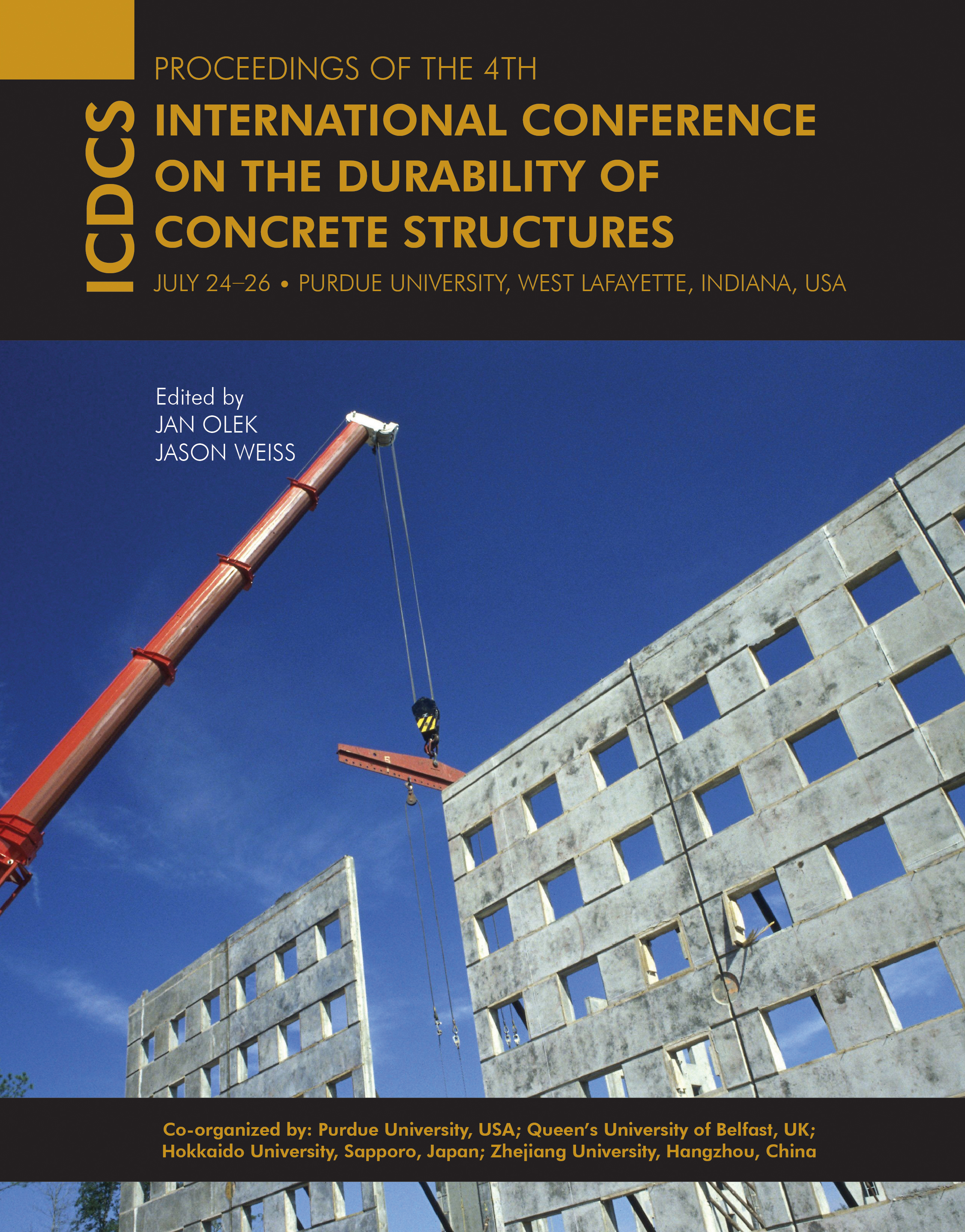Abstract
Concrete patch repair has long been used to repair the damaged concrete structures. In cold regions, freeze– thaw cycle is one of the major damage factors. Not only the material itself is damaged by freeze–thaw cycles, but also the adhesive interface, which is regarded as the weakest part of composite system, degrades under freeze–thaw cycles. Air entraining agent has long been used to increase the freeze–thaw resistance of concrete materials. However, the effect of air entraining agent on the adhesive interface under freeze–thaw cycles has not been explored. The degradation mechanism and failure mode of concrete repair system have not been studied, either. In this study, to investigate the effects of water–cement ratio of substrate concrete and air entraining agent in substrate concrete and repairing mortars, three kinds of substrate concrete were casted and repaired by two kinds of ordinary Portland cement mortar. With certain number of freeze–thaw cycles up to 150 cycles, through splitting prism test, the splitting tensile strength and failure mode of composite specimens were experimented. The relative dynamic elastic modulus and splitting tensile strength of substrate concretes and repairing mortars were obtained as well. Results showed that air entraining agent in the repairing mortar greatly influenced the adhesive tensile strength under freeze–thaw cycles. The water–cement ratio and air entraining agent of substrate concrete insignificantly affected the adhesive interface, but affected the splitting tensile strength and the freeze– thaw resistance of substrate concrete, and thus affected the failure mode of composite specimens.
DOI
10.5703/1288284315427
Included in
Tensile Bond Between Substrate Concrete and Normal Repairing Mortar under Freeze–Thaw Cycles
Concrete patch repair has long been used to repair the damaged concrete structures. In cold regions, freeze– thaw cycle is one of the major damage factors. Not only the material itself is damaged by freeze–thaw cycles, but also the adhesive interface, which is regarded as the weakest part of composite system, degrades under freeze–thaw cycles. Air entraining agent has long been used to increase the freeze–thaw resistance of concrete materials. However, the effect of air entraining agent on the adhesive interface under freeze–thaw cycles has not been explored. The degradation mechanism and failure mode of concrete repair system have not been studied, either. In this study, to investigate the effects of water–cement ratio of substrate concrete and air entraining agent in substrate concrete and repairing mortars, three kinds of substrate concrete were casted and repaired by two kinds of ordinary Portland cement mortar. With certain number of freeze–thaw cycles up to 150 cycles, through splitting prism test, the splitting tensile strength and failure mode of composite specimens were experimented. The relative dynamic elastic modulus and splitting tensile strength of substrate concretes and repairing mortars were obtained as well. Results showed that air entraining agent in the repairing mortar greatly influenced the adhesive tensile strength under freeze–thaw cycles. The water–cement ratio and air entraining agent of substrate concrete insignificantly affected the adhesive interface, but affected the splitting tensile strength and the freeze– thaw resistance of substrate concrete, and thus affected the failure mode of composite specimens.





